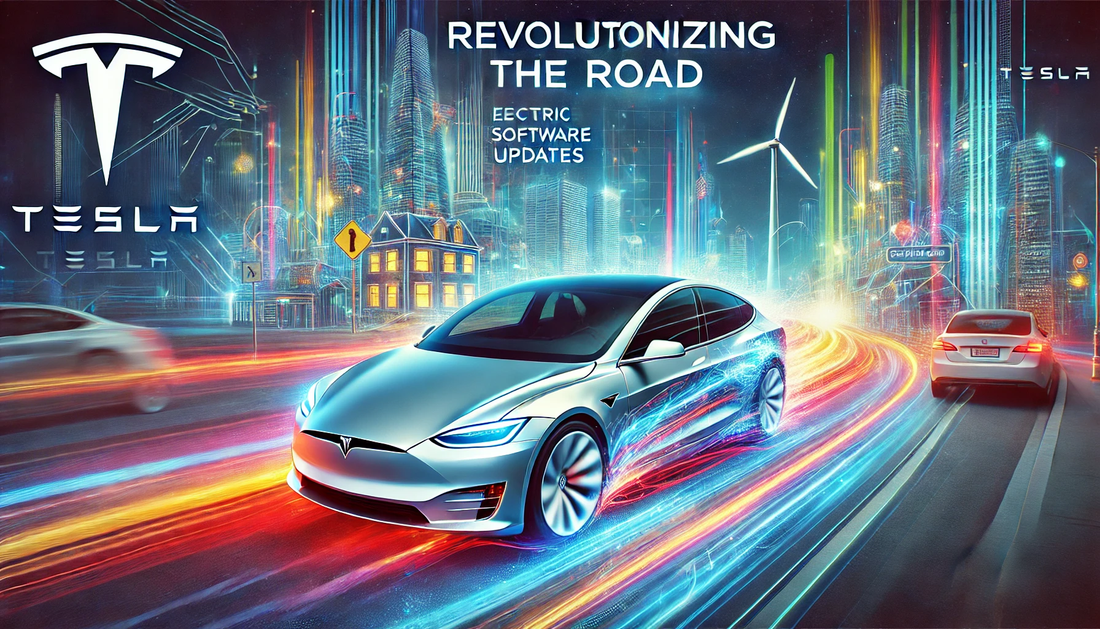Tesla didn’t just build cars—they built an ever-evolving tech marvel on wheels. Instead of treating vehicles like fixed products, Tesla turned them into software-driven platforms that get better over time.
Thanks to over-the-air (OTA) software updates, Teslas can receive new features, performance boosts, and safety enhancements—all without a trip to the service center.
For startups, there’s a huge lesson here: embracing continuous improvement through software updates can redefine customer satisfaction, cut support costs, and keep you ahead of the competition.
So, how did Tesla pull this off? And more importantly, how can you apply these lessons to your business? Let’s dive in. 🔍
1. Turn Your Product into a Platform
Tesla’s genius move? They didn’t just make cars; they made a software-driven platform. Every Tesla is essentially a high-tech computer on wheels, capable of receiving updates that improve battery life, navigation, and even self-driving capabilities.
💡 Takeaway: If you’re building a product, think beyond the initial launch. Ask yourself: Can this product evolve over time? How can software play a role in continuous improvement?
2. Listen to Users and Adapt
Tesla doesn’t just update cars—they listen to their customers first. Case in point: the introduction of “Dog Mode,” which keeps pets comfortable in parked cars, came directly from user requests. Tesla pays attention, and their customers love them for it.
💡 Takeaway: Implement a strong feedback loop. Use surveys, social media, and direct user interactions to identify pain points and prioritize feature updates.
3. Move Fast with Agile Development
Traditional automakers take years to roll out improvements. Tesla? They push updates within weeks. By following agile development, Tesla constantly tweaks and enhances vehicle performance, from improving acceleration to refining autopilot.
💡 Takeaway: Adopt agile workflows. Break projects into small, manageable updates rather than waiting for a major overhaul.
4. Prioritize Security and Compliance
With great power (or software control) comes great responsibility. Tesla ensures every update meets strict security and regulatory standards, reducing risks for users.
💡 Takeaway: If your business relies on software, prioritize security from the start. Use automated testing, encryption, and compliance audits to safeguard your users.
5. Invest in R&D for Innovation
Tesla isn’t just making software tweaks—they’re investing billions in R&D. Features like Autopilot upgrades and enhanced battery management wouldn’t be possible without deep research.
💡 Takeaway: If you’re serious about innovation, allocate resources to research. Even a small R&D budget can keep you ahead of competitors.
6. Surprise Users with Value-Added Updates
Not all updates are about fixing bugs. Tesla delights users with fun surprises—like holiday-themed features, new games, and even a “Boombox Mode” that lets cars play custom sounds.
💡 Takeaway: What can you offer your users that goes beyond expectations? Small enhancements can boost loyalty and excitement around your brand.
7. Educate Customers on New Features
Rolling out a new feature is useless if users don’t know about it. Tesla solves this with clear in-app notifications, blog posts, and video tutorials explaining each update.
💡 Takeaway: Always communicate updates effectively. Whether through email, social media, or tutorial videos, ensure your customers understand and appreciate new features.
8. Scale Without Breaking Things
Rolling out OTA updates to thousands of cars isn’t easy. Tesla’s robust infrastructure ensures updates happen smoothly without disrupting users.
💡 Takeaway: If you’re planning software updates for a growing user base, ensure your infrastructure can handle it. Cloud-based deployment and automated scaling can help.
9. Use Data to Drive Smart Decisions
Tesla collects real-time driving data to refine Autopilot, battery efficiency, and other features. Every update is backed by massive amounts of data analysis.
💡 Takeaway: Use analytics to understand how users interact with your product. Data-driven decisions ensure updates solve real problems.
10. Foster a Culture of Innovation
At Tesla, experimentation isn’t just encouraged—it’s expected. Their ability to take risks has kept them miles ahead of traditional automakers.
💡 Takeaway: Build a culture where creativity and risk-taking are rewarded. The best products aren’t created by playing it safe.
🚗💨 Tesla has shown the world that software updates aren’t just for apps—they can transform entire industries. Whether you’re running a startup or a tech company, adopting this mindset can help you stay ahead, innovate faster, and keep customers engaged.
So, what’s your next upgrade? 🚀










